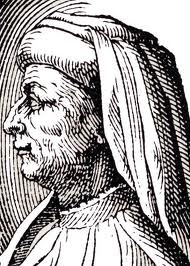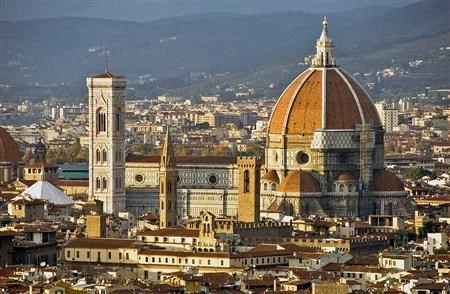 |
| Filippo Brunelleschi (en.structurae.de (unkown)) |
I would consider him a renaissance man because he changed how the world looked at technology. The definition for renaissance is the rebirth to push the limits of literacy, art, science, and technology for new hopes. It all started when he was born in 1377, to Brunelleschi Di Lippo (father) and Giuliana Spini (mother) ( biography.com). When he was a teenager, he was a goldsmith and a sculptor. He enrolled in the Arte Della Seta. (biography.com) At the turn of the century, he was a master goldsmith.
 |
| Sacrifice of Isaac (quizlet.com) |
Filippo entered a contest for sculpting (Renaissance Europe). He sculpted one of the finest artworks. Its name, "The Sacrifice of Isaac." The Italians thought it was the build of the century. But sadly, Filippo still lost to Lorenzo Gilberti. That ended his sculpting career. After his loss, he became an architect
 |
| Dome of Cathedral (www.paradoxplace.com (unknown)) |
Once he became an architect, he was chosen to build churches. His greatest building was the dome of the Cathedral in Florence (Renaissance Europe). When he was building the dome of the Cathedral, he came up with three inventions (World Book). The first invention was the raising and lowering part. It was powered by two oxen that walked one way to raise the objects. But there was one problem. For him to lower the objects, he would have to switch the oxen around, so he improvised it. He made it so when he wanted the objects to go down, a crank would shift and make the oxen go the same way. His second crane invention (right) was a thing that would make objects go from one side to the other side. This helped Filippo so he wouldn't have to walk back and forth to get the objects he needed to do the job. His third crane invention (below) was the job finisher. It stood at the top of the dome of the church, and allowed him to raise stuff from inside the church.
Okay, let's get on with the 2nd invention of Filippo Brunelleschi's. The second invention is single-point perspective. Single point perspective is when you see a building that's 3d, okay, but single point perspective is when you stand directly in front of it and then turns to 2d (World Book).
Now here is his last invention.... the blueprints. The blueprints were a big advance in the Renaissance. They were a big advance because if an architect had to build a church, he would have to count on his instinct to make it look like they want it. But with the blueprints they could look off the paper and put the walls where they showed on the blueprint (World Book).
Before his death in 1446, he was constructing two towers, but when he died, they were still finished that year. But with all the buildings he built, he pushed the limits of technology and art. Art for his sculptors and buildings and technology for his inventions (biography.com).
Work Cited
-
Compton's by Britannica. Encyclopedia Britannica Online School Edition
-Rudd, J. William.
"Brunelleschi, Filippo." World Book Advanced. World Book, 2013. Web. 15 Feb. 2013.
-Renaissance Europe
-Biography.com
Page created on 2/21/2013 12:00:00 AM
Last edited 2/21/2013 12:00:00 AM
Seubert, Trent. "Filippo Brunelleschi." Mrs. Chmiel. 2013.
